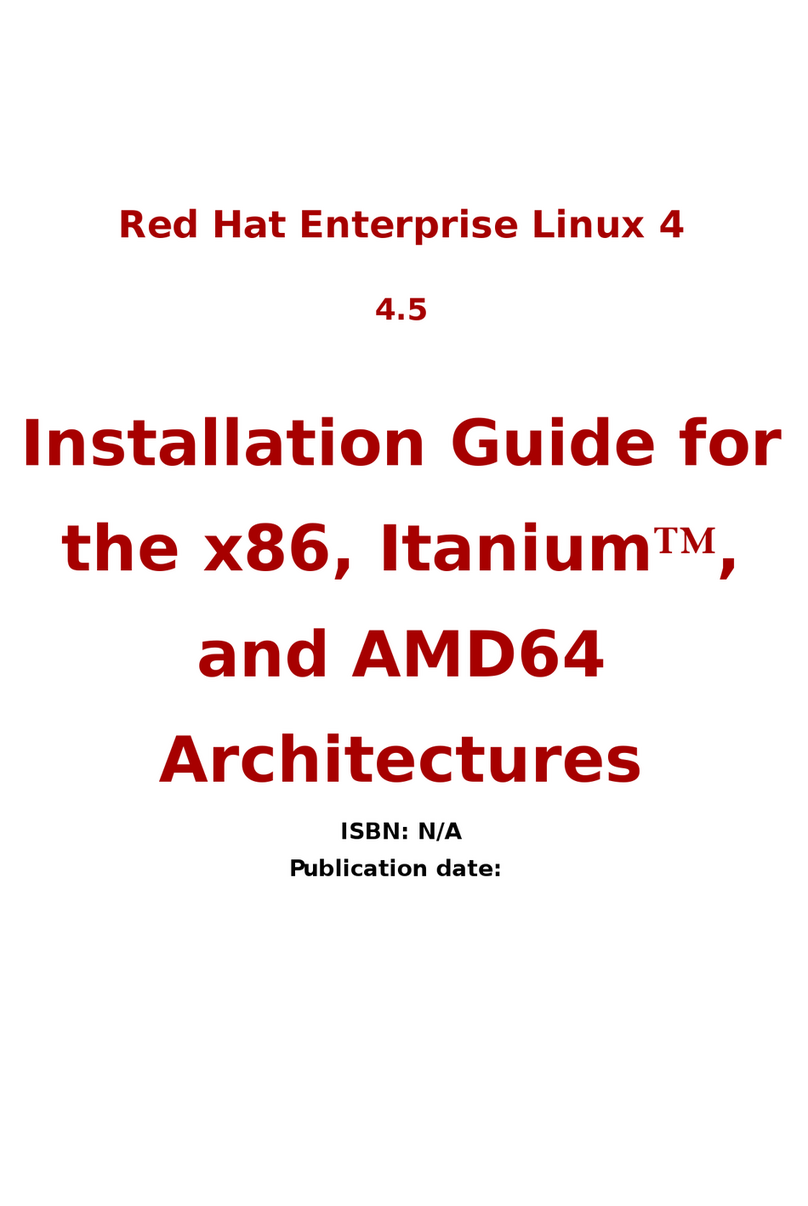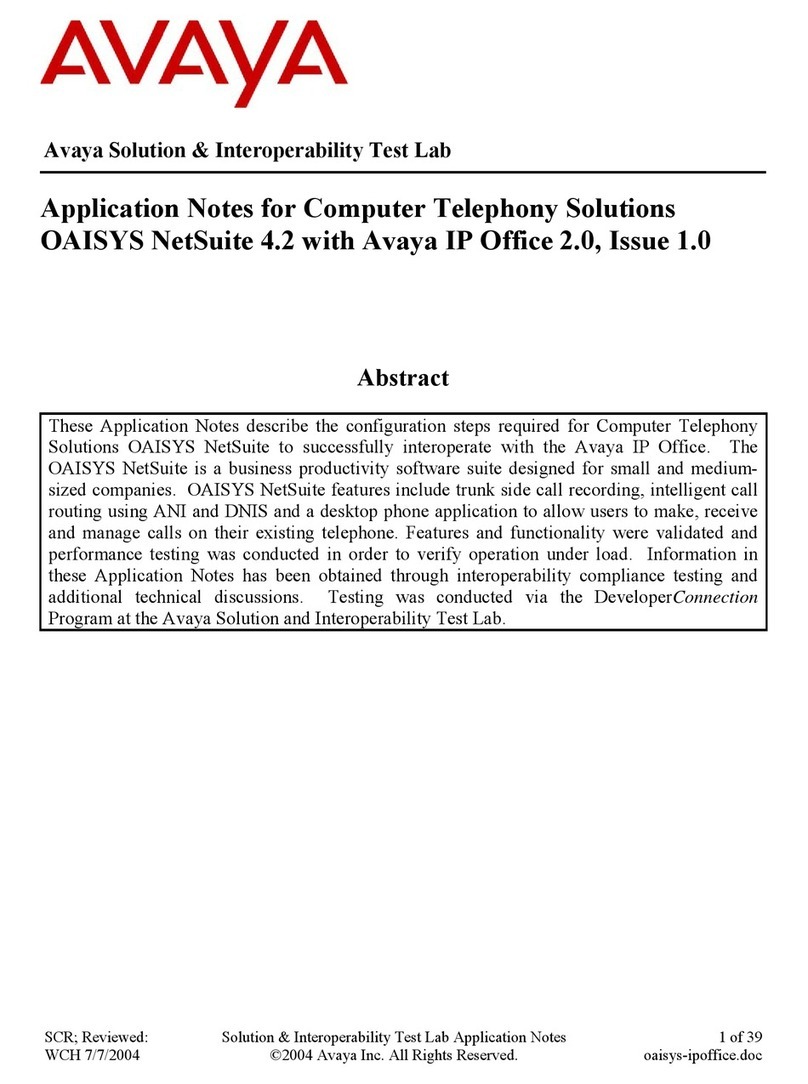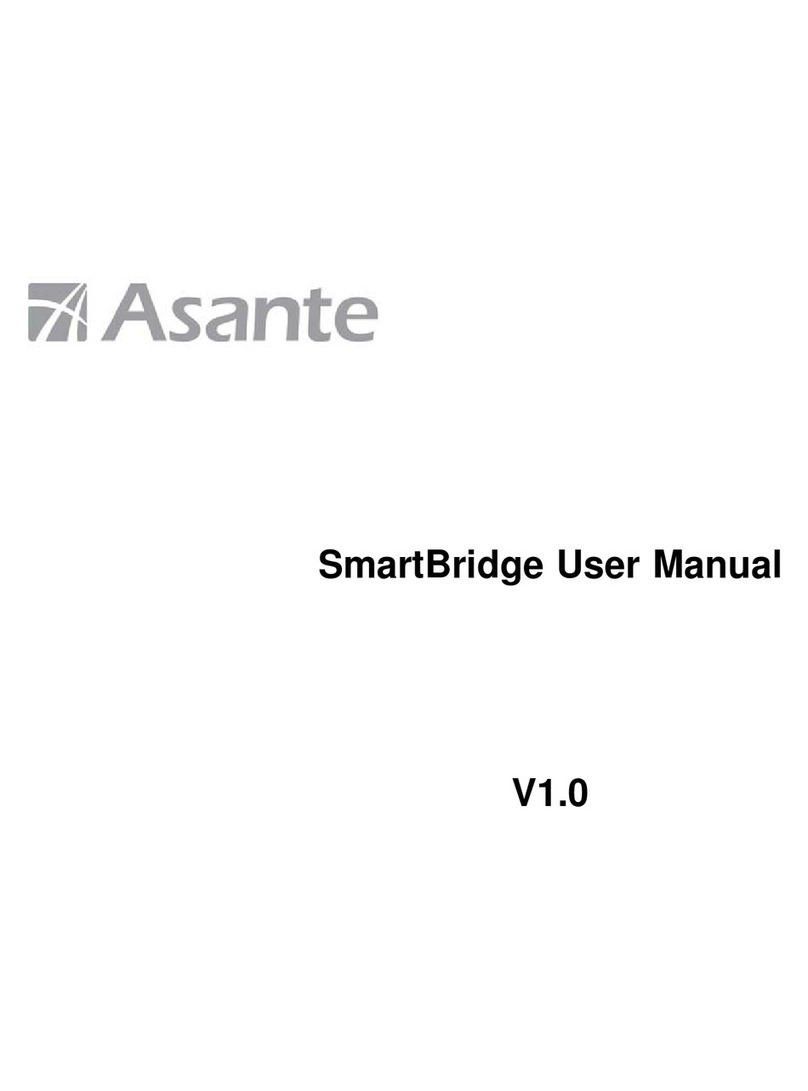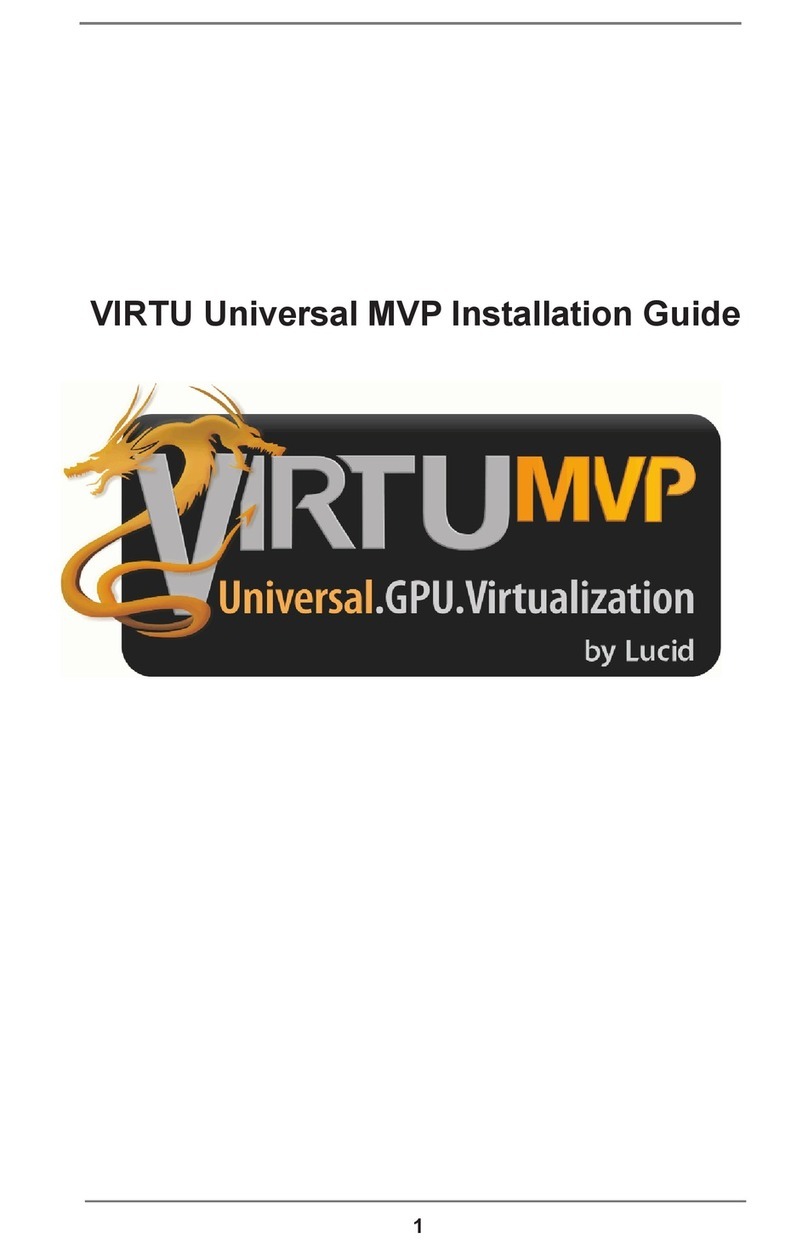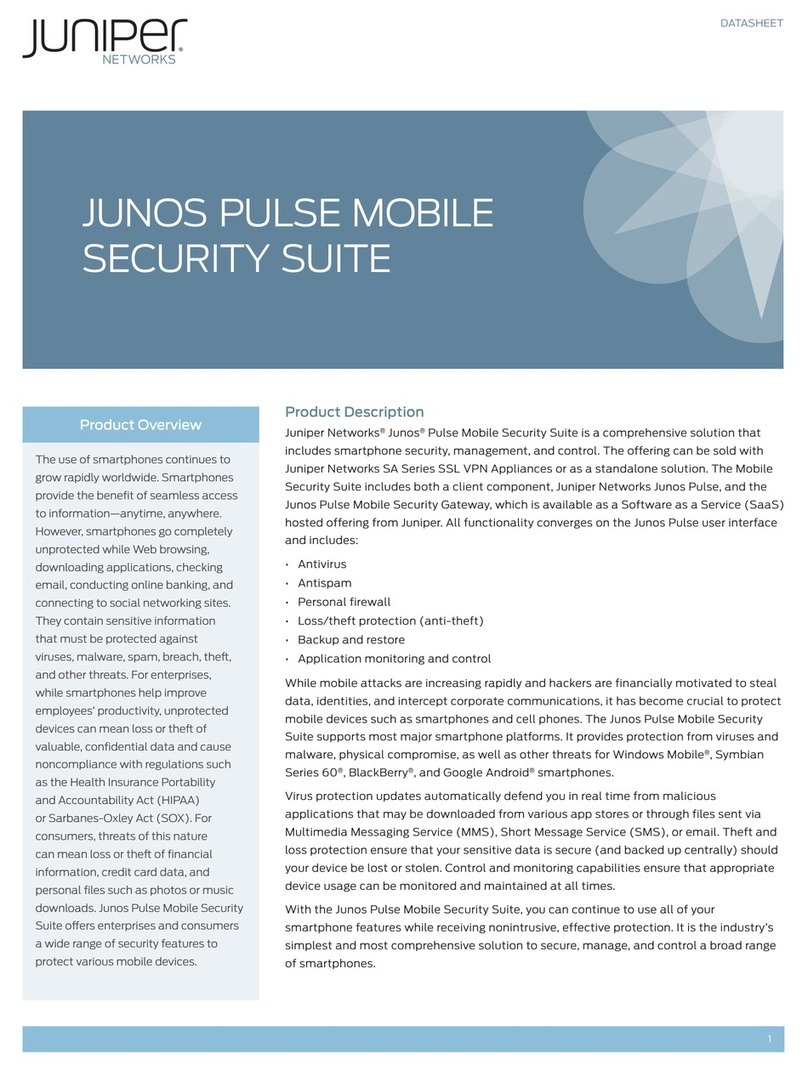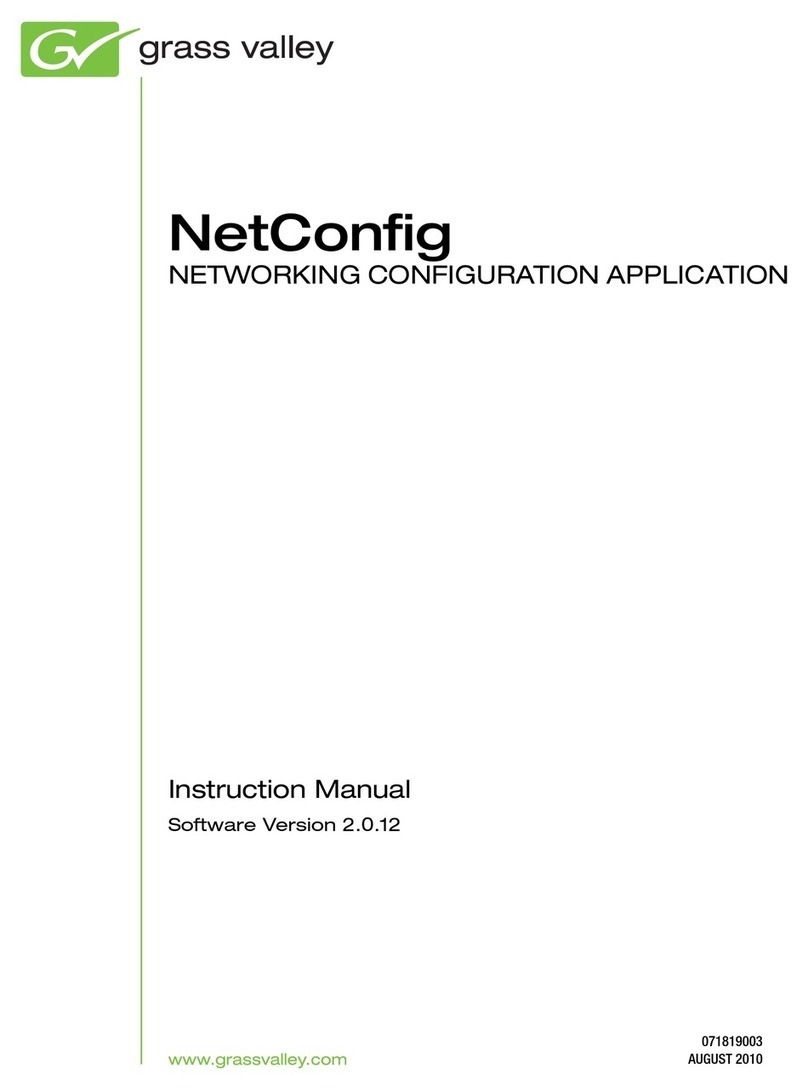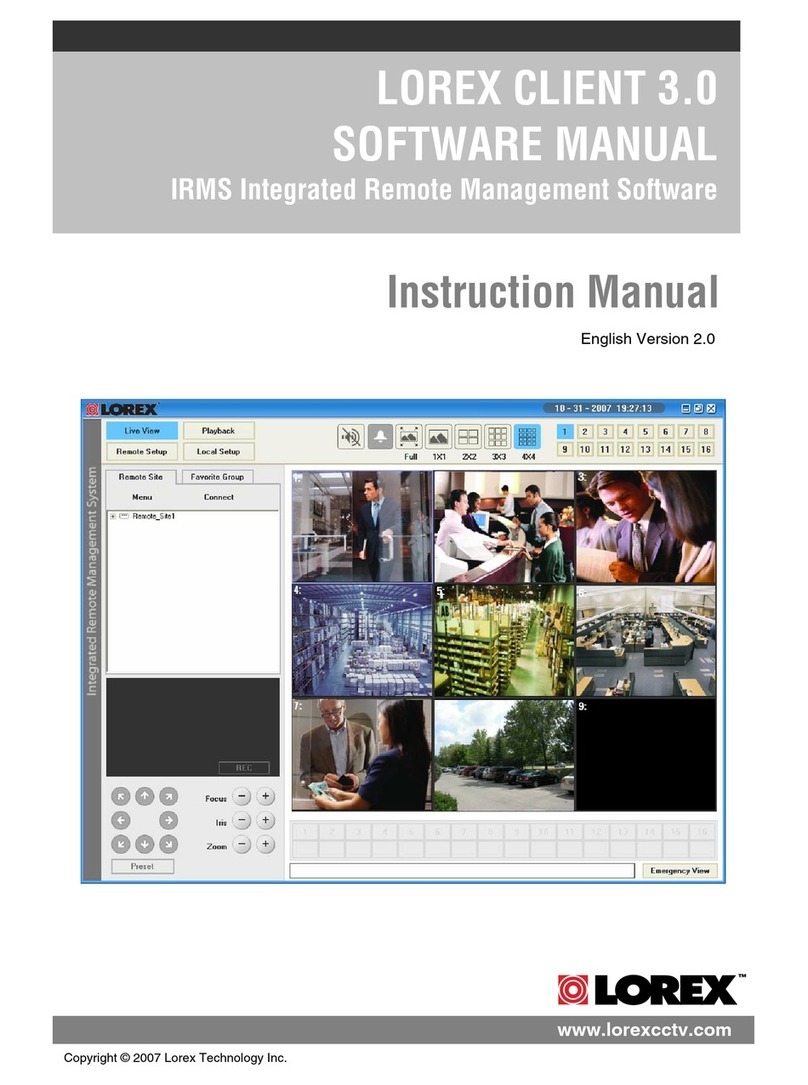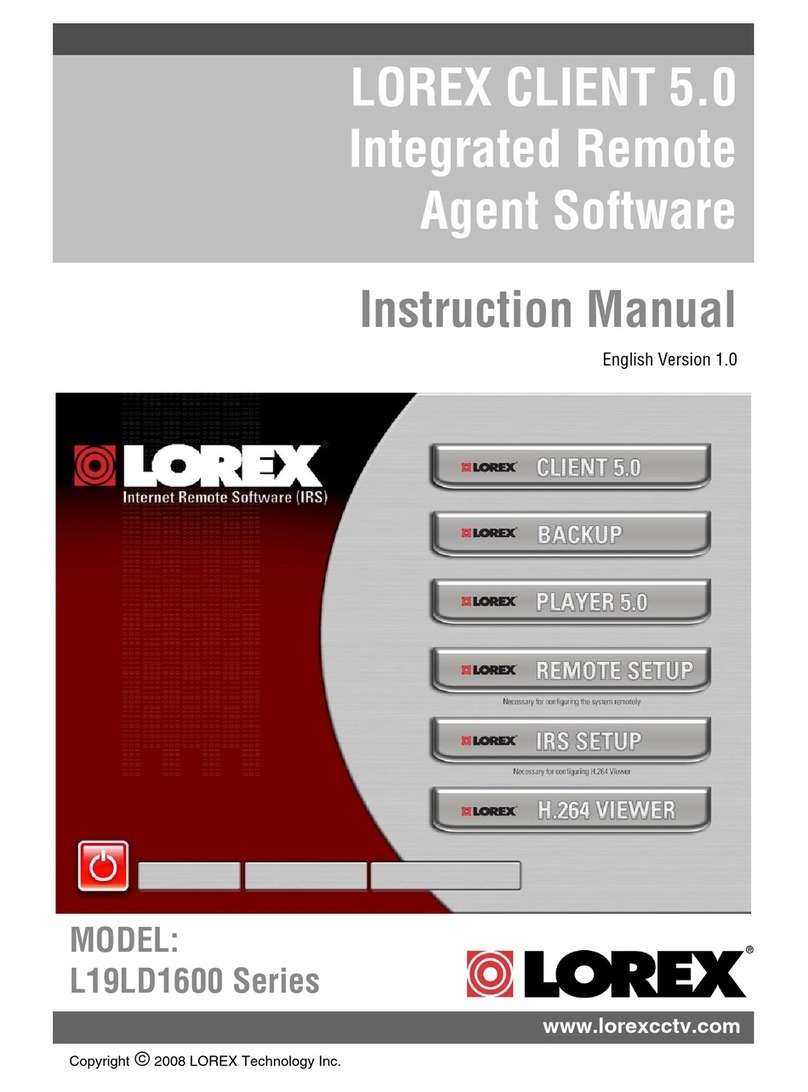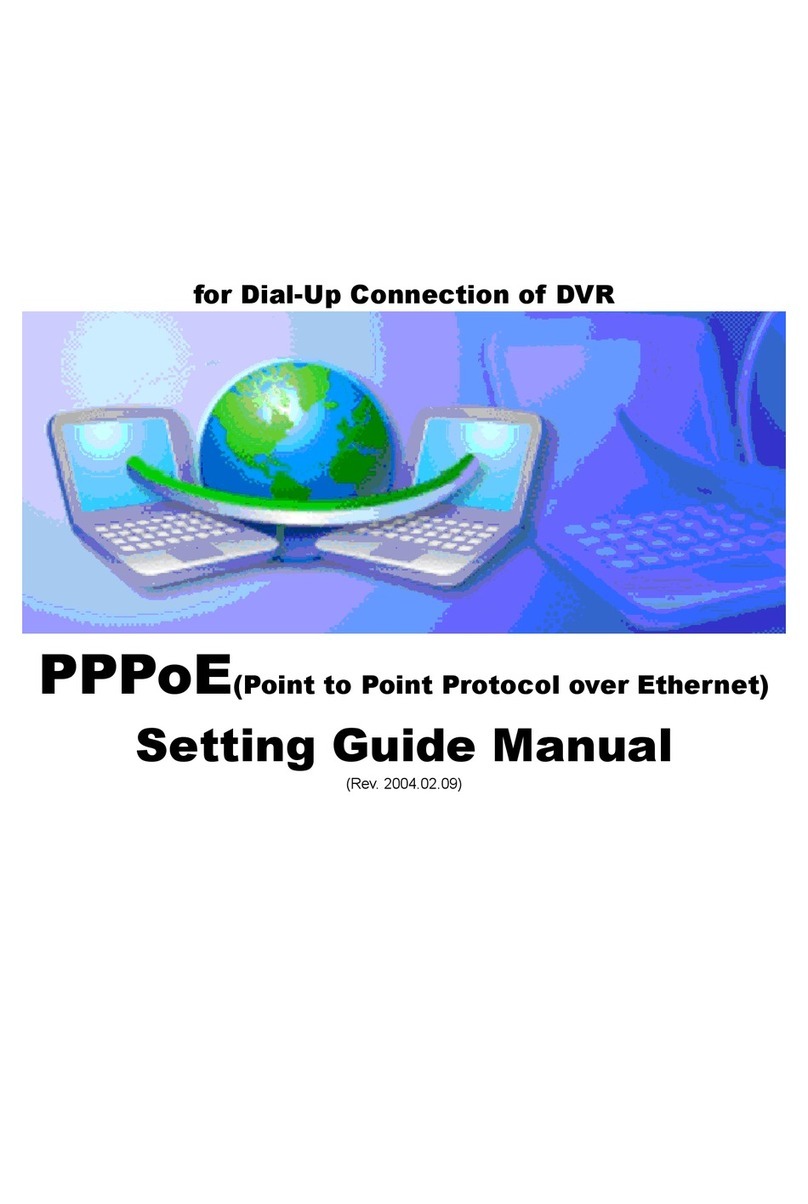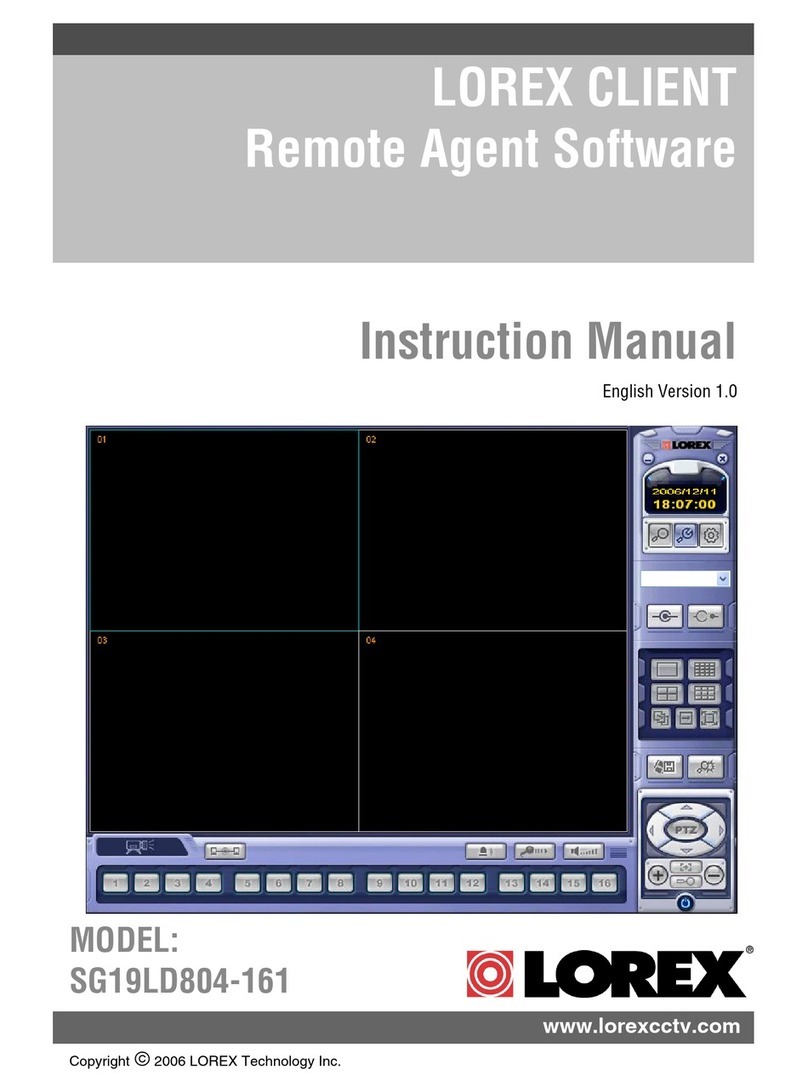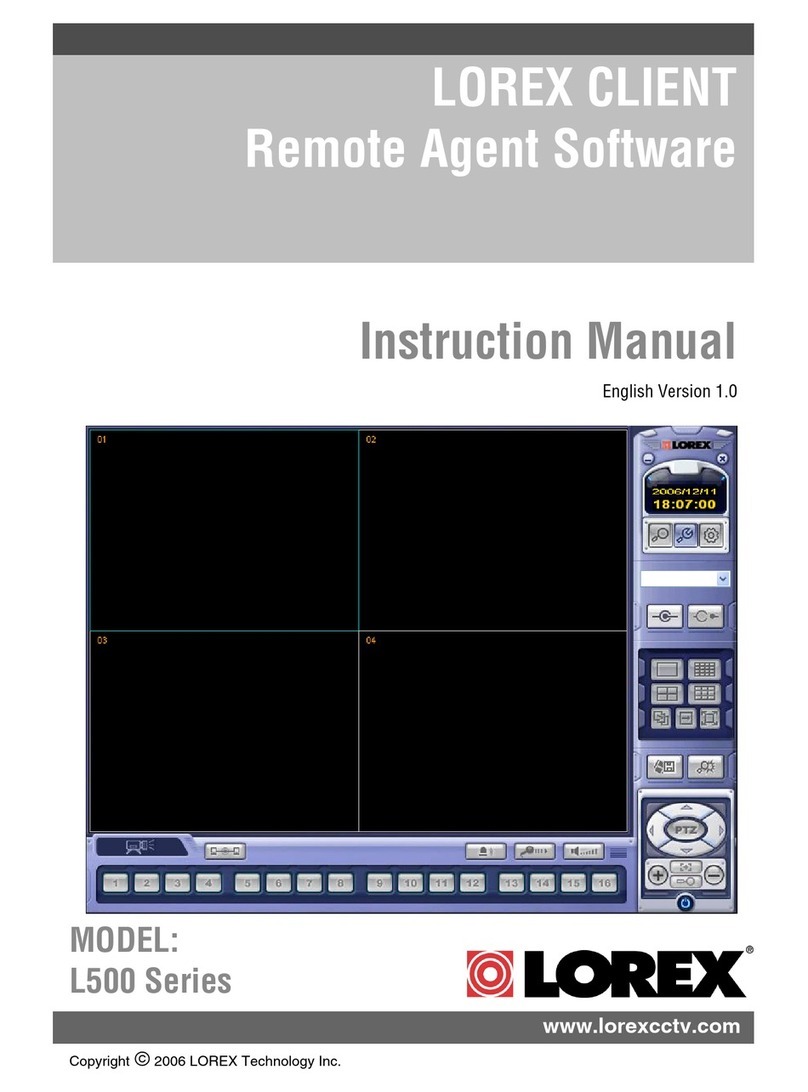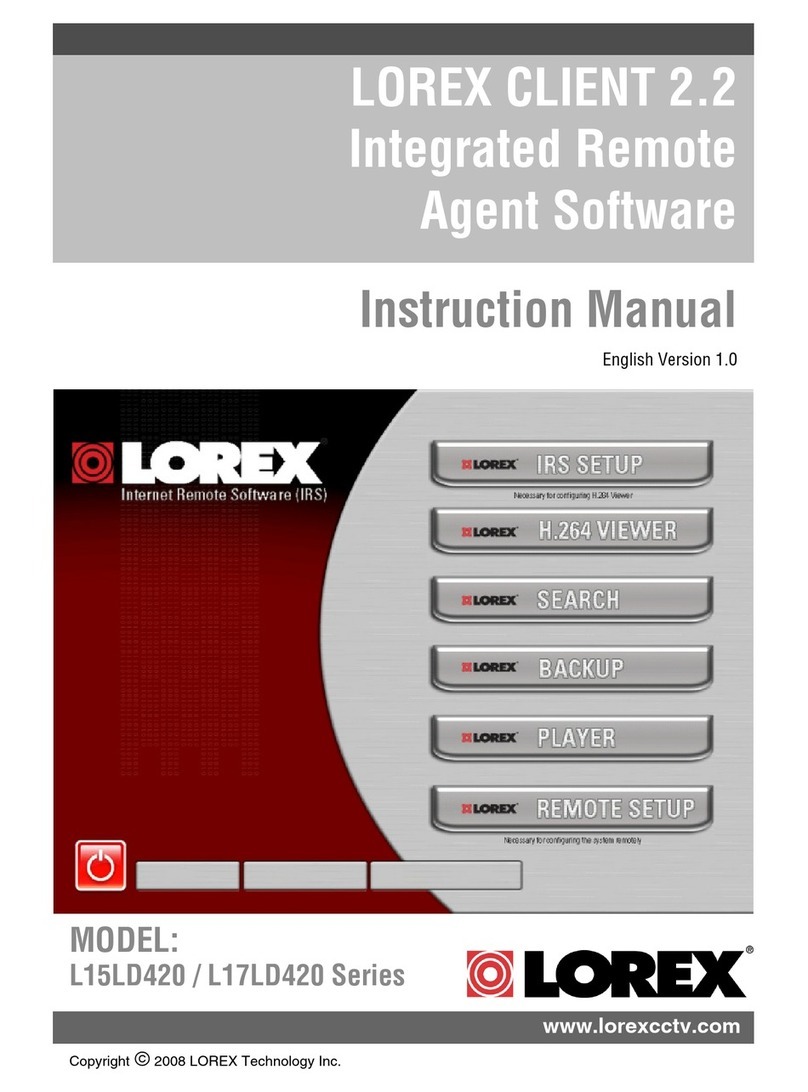
2
Table of Contents
Table of Contents
System Requirements ............................................................................... 3
Lorex Client 2.0 Software Installation .................................................. 4 - 5
Lorex Client 2.0 Software - Main Screen ............................................. 6 - 7
Setup & Configuration Menu .............................................................. 8 - 12
IP/PORT Tab ............................................................................................................................... 8
DNS Tab .................................................................................................................................... 10
SAVE Tab .................................................................................................................................. 12
Remote Playback Interface .............................................................. 13 - 14
Remote Access with the DDNS Service .......................................... 15 - 22
IP & MAC Address ..................................................................................................................... 16
Finding Your External IP Address ............................................................................................. 16
Router Port Forwarding ............................................................................................................. 17
Setting Up Your DDNS Account ................................................................................................ 18
DDNS SETUP ........................................................................................................................... 20
My Connection Information ........................................................................................................ 21
Lorex Client 2.0 Remote Access Setup ..................................................................................... 22
Remote Viewing with Internet Explorer ............................................ 23 - 24
Web Player Interface Screen ..................................................................................................... 24
Data Backup with Internet Explorer ................................................. 25 - 30
Web Backup Interface Screen ................................................................................................... 26
Backup Procedure ..................................................................................................................... 27
Play Backup Files with Internet Explorer ................................................................................... 29
Saving an AVI Backup File ........................................................................................................ 30
LorexPlayer 2.0 Backup Player Installation ..................................... 31 - 32
LorexPlayer 2.0 Backup Player Software - Main Screen ................. 33 - 37
About the Lorex Client 2.0
The Lorex Client 2.0 software package allows you to access your Observation System from a
remote location to view live and previously recorded video.
• View and Record from your PC - Connect your Observation System to your Network
• Minimum System Requirements: Windows XP, Pentium 4 processor with 256MB RAM (512MB
RAM recommended)
Please visit us on the web for the most current Manuals, Quick Start
Guides and Firmware. Additional Language Manuals are also available at:
http://www.lorexcctv.com
